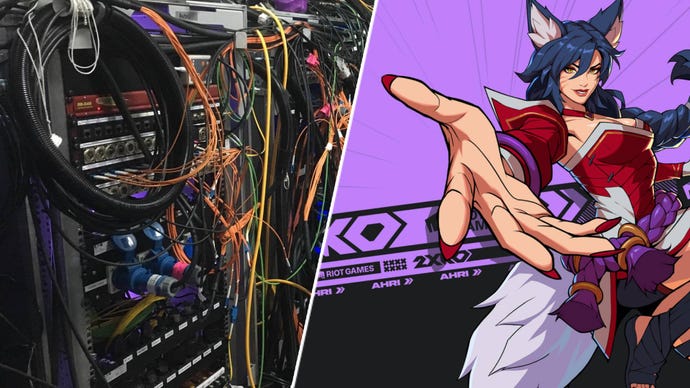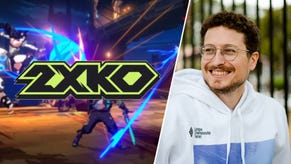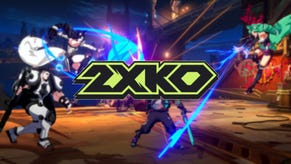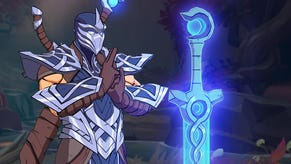2XKO will have "server-based rollback netcode", but how will that impact the game and its players?
What are the pros and cons for such an approach? Let's find out.
Late last week, senior director of 2XKO Tom Cannon announced something intriguing on X (formerly Twitter). He announced that 2XKO will have server-based Rollback netcode, that you could throw out your fears of protecting yourself against Wi-Fi warriors and their sub-standard connections and rest easy. But this short but sweet statement begs the question: what does server-based rollback netcode actually mean?
Because while rollback netcode is a known quantity at this point in fighting games as a bit of technical wizardry that synchronizes game states through predictions while rolling back any miscalculations, the addition of servers to the mix may be a curveball to the uninitiated. What does this mean for the player? Could using servers at a latency factor that is otherwise absent in peer-to-peer fighting games?
While we can't be sure of the exact recipe for what Riot Games is cooking here, we can dig into server-based rollback netcode in a more general sense. To help with that, I spoke to Adam "Keits" Heart. FGC illumni and part of the Iron Galaxy team, Heart has worked as a designer on Killer Instinct, Divekick, and more recently Rumbleverse. He also was an interviewee in Infil.net's excellent rollback article, which we recommend you read later if you want a comprehensive breakdown on how it works.
While the Cannons and Riot Games may be working on their own take on server-based rollback, it has actually been done before. Brawlhalla - the platform fighter from Blue Mammoth Games - has been using it for years to great effect. As did Street Fighter V, according to Heart, who speculates that Street Fighter 6 may be in the same boat. While a large quantity of fighting games with rollback out there use peer-to-peer (meaning a direct connection between you and your opponent), examples of this sort of approach working out are present.
But, as a player, you may be wondering what the big deal is? If your experience is fine with peer-to-peer rollback connections, what's with all this hoo-hah? Well, Heart lays out some of the potential benefits of adding servers to the mix.
"My understanding for using servers with rollback is that sometimes you can’t connect to someone peer-to-peer due to NAT settings. If you and I aren’t able to connect, but we can connect to a server, then we can use that server as an intermediary. The only difference is that instead of my inputs going between us, they go to the server first and then to the other player. It just makes an extra hop."
Heart continues, "The other potential nice thing about servers, is that if we’re playing peer-to-peer and one of us disconnects, then there’s no way of telling who disconnected. With servers, you actually would know who pulled the plug. So that gives a bit of extra ability to deal with rage quitters and frequent disconnectors."
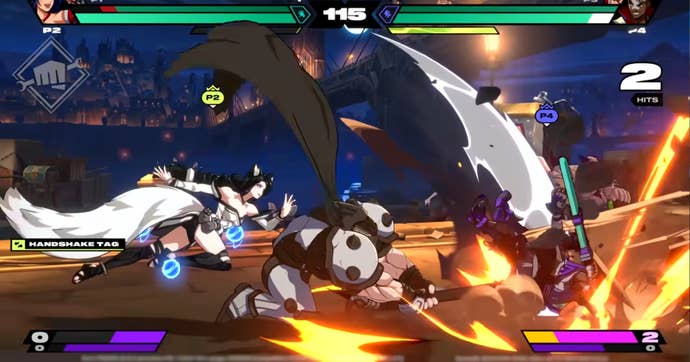
There is one major cost though, and that's... cost. Like real-world money cost. Running these servers is expensive. Looking back at the the 2XKO (then called Project L) announcement in 2022, Tony Cannon addressed netcode in a dedicated segment. In it, he explains that network traffic will be sent between players through Riot Direct. Riot Direct, as explained by the VALORANT devs a while back is basically Riot's own ISP. This, as you can imagine, is crazy expensive. But Riot apparently has the cash for that.
While this all sounds great (especially the ability to detect and punish rage quitters, something that's become a thorn in Tekken 8 as of late), it raises a good question. If inputs have to hop to a server before a player, is added latency a concern? What about for cross-continent play? According to Heart, this is where the rollback half of the equation comes in.
"Yeah, it might add a little bit of latency. But if the rollback is done well, you shouldn't notice that. I would be hard pressed to tell the difference if I was playing at 30 milliseconds (ms) or 90ms with rollback y’know. And honestly, the difference between 90 and 150 isn’t huge either (laugh).
150 MS will take you around most of the world, so yes, there will be a small latency increase, but will you notice it? No - because the whole point of rollback is that your buttons always come out when you press ‘em. We don’t delay yours - we wait for the opponent's to do a rollback if our predictions were wrong, and re-simulate the game up to the current accurate state when we have both players’ inputs. If that takes 10, 20 milliseconds longer, it’s fine.
.jpg?width=690&quality=70&format=jpg&auto=webp)
So, with that explainer done, where does that leave us and 2XKO? Well, VALORANT's servers seem to be performing well for the reaction-heavy FPS crowd. Assuming there are no issues there, the ball is firmly in the 2XKO team's court to have that rollback netcode foundation in a good place for the 2v2 fighter. Heart is optimistic of their chances to knock the ball out of the park. Plus, Tony Cannon being a core member of the has obviously set a high bar, thanks to him being the creator of GGPO and Radiant Entertainment's - Rising Thunder - feeling great to play online.
So with all this in mind, it may be worth keeping your eyes out for an official post or video on this topic from the 2XKO team in the coming weeks. In my opinion, netcode is more important than the characters we'll see added to the game. Netcode and online functionality is the foundation of any good fighter, and it's up to the 2XKO team to build it strong.
